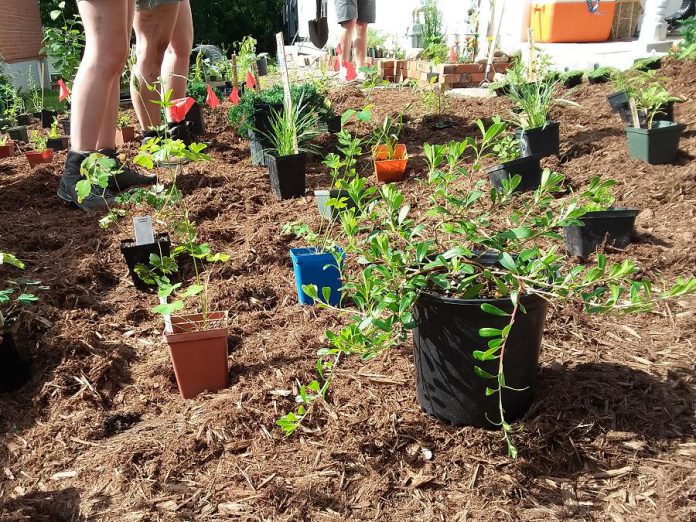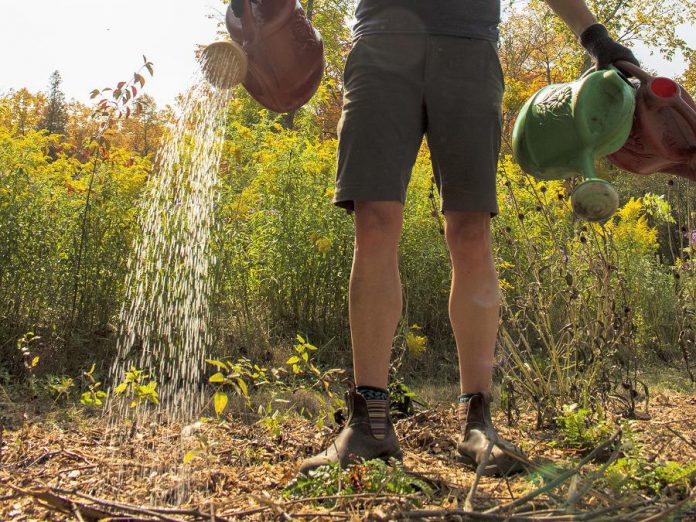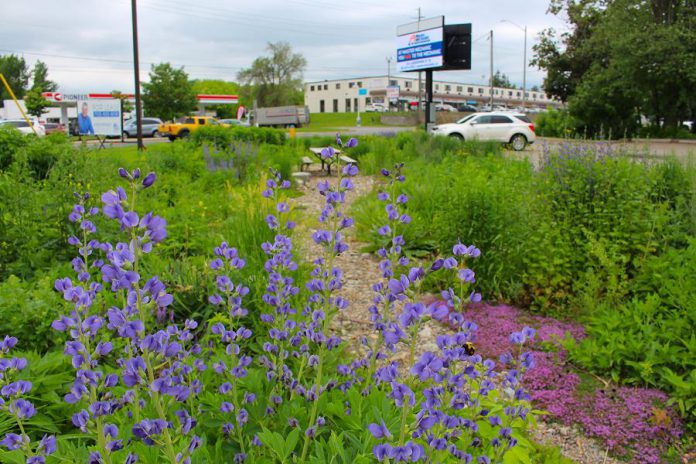
In the garden at this time of year you may notice the yellow blooms of the wood poppy, the fragrance of a lilac, or the pop of white on wild strawberries. Plants and trees bring us colour, texture, improved air quality, food for pollinators, and exceptional beauty.
What I love most about the gardens I see around Peterborough is what you can’t see, what lies beneath the blooms, stems, and petals — the roots. The main function of the roots of a plant is to absorb water and nutrients from the soil and move them into the stem. The stem then distributes water and nutrients to the leaves.
Through photosynthesis, the leaves produce food that travels to the roots. The roots store this newly produced nutrition until it is needed.
Amazingly, roots are able to do two things to help us water in the garden. First, roots will seek any pockets of water beneath the soil, especially during times of drought, to help keep a plant thriving. Second, during heavy rainfall periods, rain is absorbed into the soil and follows the deep roots further down into the ground to replenish groundwater.
Not long ago, GreenUP’s Hayley Goodchild hosted an online workshop on the City of Peterborough’s rain garden subsidy program. During that workshop, Goodchild explained the plants you choose matter when you are designing a garden to help capture rain or be “water wise” (tolerate droughts).
These choices are often not about the colour of the plant, the height, or the cost. These choices are about what you can’t see: how deep roots will grow.

“Many of the plants that are well suited to rain gardens and water-wise landscapes are those with substantial root systems,” Goodchild says. “Some of these plants, like switchgrass, grow deep roots that can reach water many feet below the surface. Others, such as wild geranium, develop shallow but dense rhizomes and fibrous roots that hold lots of water.”
Plants like these have the potential to help us solve a number of climate change challenges. Communities and organizations, including GreenUP, have been advocating for and demonstrating these nature-based solutions, often called green infrastructure.
The Ontario Green Infrastructure Coalition explains that green infrastructure comprise the natural vegetative systems and green technologies that collectively provide society with a multitude of economic, environmental, and social benefits. Green infrastructure can include rain gardens, wetlands, parks, rain barrels, green roofs, and bioswales — channels designed to concentrate stormwater runoff while removing debris and pollution.
What makes green infrastructure effective? Green canopies and planted spaces like gardens can cool local waterways (helping our aquatic friends) as well as parks, sidewalks, and trails (aiding our human health). Other kinds of green infrastructure — like green roofs/walls or shade provided by trees — also support more efficient home and business energy systems.
In addition to these important benefits, green infrastructure is increasingly popular because of all those roots and the water management solutions they provide.
“By growing healthy and robust roots, these plants can withstand long periods without rain,” Goodchild explains. “When it does rain, these plants are effective at soaking up the rain and preventing runoff and soil erosion. In our region, many of the plants that do this best are native species.”

You can maximize the many benefits of deep and healthy roots in your own garden. Roots take time to establish but you can help them by training the roots to grow long and deep into the ground.
Training your plant roots is all about how you water your plants, so here are five tips.
1. Choose the right plant for the right spot
Many native plants are accustomed to drought as well as heavy rainfall events.
The staff at the Ecology Park Native Plant and Tree Nursery are here to help you pick appropriate plants for your particular spaces.
Visit greenup.on.ca/nursery to learn more.
2. Water your plants with more water but less often
You may be tempted to give your plants a small drink of water each day, but we recommend doing the opposite.
Give your plans a good long drink less often — once a week if it hasn’t rained one or two inches.
3. Water your plants directly at the roots

The leaves of a plant do not need water sprinkled on them, so leave the sprinkler in the garage. Instead, focus your efforts around the base of the plants using a watering container or garden hose.
It may take longer to water your garden this way, but once the roots establish themselves, they will be working for you.
4. Water with the rain by installing a rain barrel
Watering with a rain barrel not only saves you money (and helps conserve municipal or well water), it is also better for the health of your soil and plants.
5. Use mulch
Mulching around plants with shredded bark, shredded leaves, or compost will also help retain moisture in the soil.
This means you will use less water than you would for gardens with exposed soil.

GreenUP is proud to be working with the City of Peterborough on the Rain Garden Subsidy Program. If you are interested in installing a rain garden, please check out greenup.on.ca/ready-for-rain.
If you are being water wise in your garden, we would love to hear from you! Nominate your garden or a neighbour’s garden at greenup.on.ca/waterwise, or email Heather Ray at heather.ray@greenup.on.ca and share your water wise story.


























